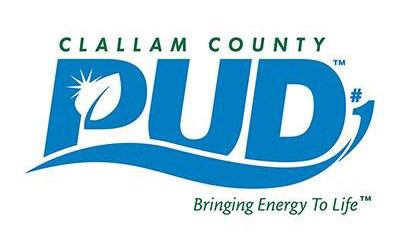Clallam County PUD Commissioners’ meeting
When: 1:30 p.m., Monday, May 9.
Where: Lake Crescent boardroom of the main office, 104 Hooker Road.
About: Public is invited to attend and provide comment of Initiative 732 — a tax on carbon emissions set to appear on November’s state general election ballot.
Clallam County PUD commissioners are mulling over the possible local impacts tied to a carbon tax initiative set to come before the voters in November.
Although I-732 already has secured its place on the upcoming state general election ballot, Clallam County Public Utility District No. 1 officials are finetuning a resolution in reaction to the initiative.
Already, during a preliminary discussion May 2, the commissioners responded unfavorably to I-732, which Clallam PUD officials estimate would result in a 1-4 percent electricity rate increase within its first year.
The commissioners are anticipated to gather public comment and take a formal stance on the initiative at their next meeting at 1:30 p.m., Monday, May 9.
Pushed by a nonpartisan grassroots group Carbon Washington, I-732 is intended to encourage cleaner energy solutions by taxing, per ton, carbon dioxide (CO2) pollution from fossil fuels.
The tax would start in 2017 at $15 per ton of CO2 emissions and jump to $25 in 2018. Moving forward, the tax rate would annually increase by 3.5 percent plus inflation up to $100 per ton, according to the policy proposal.
“The initiative would affect public utility districts, including Clallam PUD, by applying the carbon tax to certain resources used to serve customers,” Michael Howe, Clallam County PUD communications and government relations manager, told the PUD commissioners during a briefing of I-732.
“For Clallam PUD that means it is imposed on PUD customers using electricity.”
The seller of the electricity, in this case the PUD, is held liable to the state for payment of the tax.
Although Clallam PUD supplies its electricity via nearly 99 percent carbon-free resources, mainly from renewable hydropower, Howe said, I-732 assumes some level of carbon dioxide emissions.
“I-732 would impact the way we pay for electricity,” he said. “The reason for the cost increase is because the initiative assigns a carbon liability for market purchases of electricity made by the BPA
(Bonneville Power Administration) and included in the electricity the PUD buys at-cost from BPA.”
As part of the U.S. Department of Energy, BPA is the federal nonprofit agency that serves about one-third of the electrical power used in the Northwest. The agency generates power via 31 federal hydro projects in the Columbia River Basin, one nonfederal nuclear plant and several other nonfederal power plants.
Market purchases are made by BPA when there’s a need for more electricity, Howe explained, which often occurs during times of lower hydropower generation.
The electricity purchased to meet demands come from a “pool of unspecified electricity resources” that could be anything from wind, solar or natural gas, Howe said.
I-732 would assume a certain amount of CO2 emissions from the “unspecified” resources, he said, “so even if everything we purchased in addition was water there would still be assumed carbon.”
Based on projections from the Washington PUD Association, I-732 would increase the cost of power within the first year between $500,000 and $1.8 million. By year two, cost estimates range between $900,000 and $3 million.
In 2025-2026 the tax liability is projected to be between $1.2 million and $4.1 million. The wide range in cost estimates reflect the variation between the low water and high water mark of BPA.
“The cost is projected to vary depending on how much hydropower is available and the need for market purchases,” Howe said. “We are projecting the tax would be imposed on between 4 percent and 14 percent of the electricity we purchase from BPA.”
Other CO2 policies underway
“I-732 is not alone,” Howe said.
Coinciding with the initiative, a Clean Power Plan and Clean Air Rule are both in development for implementation in Washington.
“This is scary because if you talk about a $100 per ton carbon cost just from I-732 and then you add EPA’s Clean Power Plan and all the other initiatives, we could really have a huge increase to our customers and with no benefit because we’re already 99 percent clean,” PUD Commissioner Will Purser said.
The Clean Power Plan rule adopted in 2015 is intended to meet federal carbon reduction requirements for electricity generation nationwide. The Washington State Department of Ecology is developing a plan in response to the rule, which is overseen by the U.S. Environmental Protection Agency. The plan is in draft form, but DOE is required to submit a final plan to EPA by Sept. 6, 2018.
However, the Supreme Court put the Clean Power Plan “on hold” following a vote in February in response to a request from a broad array of states, utilities and other industry groups that asked the high court to freeze the rule while legal challenges play out in a lower court, according to DOE.
Until DOE officials receive clarification on the EPA’s authority from the courts, they’ll continue to work on the plan.
State officials also are developing a Clean Air Rule aimed at helping to meet the state carbon reduction goals set by the 2008 Legislature.
In late January, DOE officials withdrew the draft rule after receiving feedback from environmental and industry stakeholders and are in the midst of seeking additional comments and integrating the suggestions.
The revised rule is scheduled for release in late spring in preparation for adoption in the summer.


